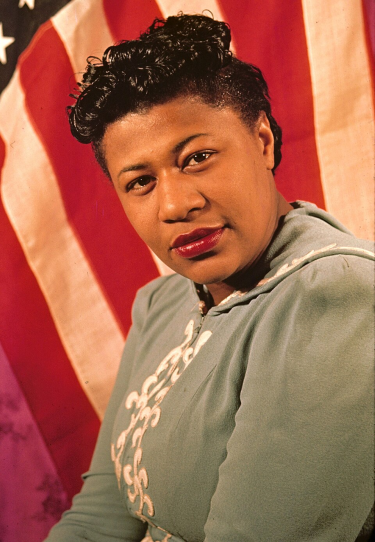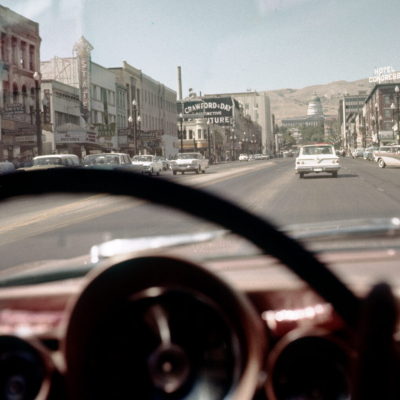Gary Glazner
Gary Mex Glazner makes his living as a poet. He is a graduate of Sonoma State University’s Expressive Arts program with an emphasis in poetry. In 1990, Glazner produced the first National Poetry Slam in San Francisco. His poetry has appeared in anthologies, periodicals, on CD, radio, television, and underwater on the Bay Area Rapid Transit system. His poems have been translated into Chinese, Moldavian, Nepali, and Vietnamese. In 1997, Poets and Writers Inc. awarded him a grant to work with Alzheimer patients using poetry. Glazner is the Minister of Fun for Poetry Slam Incorporated.
In honoring Jack Kerouac, Allen Ginsberg, William Burroughs and the entire Beat influence on younger generations of creative artists, KnitMedia, parent company of the Knitting Factory clubs, and Pontiac Vibe are presenting Beatfest 2002, a festival of words and music inspired by the Beat Generation. This festival will be bookended by four-day events at both Knitting Factory New York and Hollywood, with an “on the road” leg, going cross country, connecting the two festivals.
Glazner is the emcee of the road events. He talks about his life as a poet, the beat era, and Beatfest 2002 with Jerry Jazz Musician publisher Joe Maita.
*
_______________________
JM Who was your childhood hero?
GG My childhood hero was the character that wore PF Flyers, who could run and jump and save people. As a child I believed that was true, and I tried to jump over a brick wall in New York. Of course, I smashed into it and the reality of the world became apparent.
JJM Why do you suppose he was your hero?
GG I just thought it was so cool that you could put on these shoes – sneakers as we called them – and go save people and jump over buildings. It was fun to see all the great things they showed this kid doing.
JJM You grew up in New York?
GG Yes, Staten Island.
JJM How did you get into poetry?
GG I started writing dirtly limericks to amuse my school chums, and found out that I could make people laugh with my poetry. Then, in college I read story of a beat poet named Lou Welch, who was Gary Snyder’s roommate in college. He wrote a great poem called “Raid Kills Bugs Dead.” Welch walked off into the woods in the early 1970’s with his gun, and having left a suicide note, has never been found. I loved his poetry and started writing poetry out of that. That was about twenty years ago.
JJM Did you put a lot of effort into reading Ginsberg and Kerouac’s work?
GG I did in college. I had the best program there called Expressive Arts. Whatever we decided to study, we could do it. I just went into the poetry stacks in the library, and for about a two year period read books of poetry every day. I would go in and pick them out and read, and that is how I got my grades in college.
JJM You lead a pretty enviable life. One of the things that stands out about you is that you make your living as a poet, something a lot of us would like to able to say. How do you do it?
GG I do it primarily through giving readings and doing tours. I have also been able to work with different kinds of concepts, like taking the poet in residency idea from universities. That benefits universities by the prestige, and by bringing in money from the alumni. I apply that to businesses. For example, I was a poet in residency at a hotel where they gave away 45,000 of my poems.
JJM How did they distribute those?
GG They put them on the pillows of the guests. They are called pillow poems. One of them is “Tortilla, are you moon or sun? Each bite brings the answer.” So they are just little short little southwestern poems. That was a really steady job for a year and a half. I made really good money. Can you imagine every morning people waking up and reading your poems?
JJM Have you been able to transfer that success to other business concepts as well?
GG Yes, I have been able to work with a sponsorship for tours. For instance, in the summer of 2000, Grand Marnier funded a tour across America that included 100 poets. We did 38 readings in 32 cities in 30 days. That is what the film Busload of Poets documents. I was able to make a strong connection between their demographics and our poetry. Do you know how great it is to be able to say “demographics “and “poetry” in the same line?
JJM What is a ‘poetry slam’?
GG It is a performance contest that is judged by members of the audience. Audience members hold up scorecards like the Olympics and they judge on the performance and the concept of the poem. It lets the audience be a part of the show and it tends to get the poets to practice a little harder so their presentation is sharp. The whole thing was invented by Mark Smith in 1986, and his concept was to build an audience for poetry.
JJM Is this something that poets feel comfortable with, that their art is being judged in this fashion?
GG Well, it is controversial. If the people take the competition too seriously, it can lead to bruised poetic egos. You have to be careful about that. Of course, no one can really judge poetry like that, it is just a fun thing to do, a sort of mental sport. It can be harsh for people if they care too much about the winning part. I always say poets have to try really hard, but not care what the outcome is.
JJM Tell me a little about Beatfest 2002.
GG Beatfest is another opportunity to combine poetry and music with a corporate sponsor ,so we get a nice splash out of this and get a nice tour. The bottom line is, touring is fun. It is fun to drive across the country with a jazz band and do poems. Beatfest takes the idea that we are touring across the country in a Pontiac Vibe, and the jazz band is called The Vibes. I am doing poems, and hosting a poetry slam each night. The poets can read sections of their favorite beat poets, or they can read their own words. They can come dressed as a beatnik if they want to. It is just going to be a fun kind of thing.
JJM It seems fashioned in the spirit of Kerouac and Ginsberg and the beat writers. Are you going to be stopping in physical settings that were important to them?
GG We are trying to connect with people that are still either active in the scene, or they have reminiscences of being around at that time. We are trying to connect with certain club owners and musicians to include them in the documentary for the tour. We will certainly do some stuff in New York and the Village. I am sure they will go to San Francisco and shoot some things there, although San Francisco is not on the tour. For the documentary I am sure they will visit some of those places and get interviews there. We are pretty much reading at modern day slam venues.
JJM Is Pontiac planning to use any of this footage in their commercials?
GG Not at this time. People have suggested it, so it is an idea. I am sure they will make a decision after they see how it goes.
JJM It seems as though Beatfest has the potential for being a spiritual adventure for the participants. Is that the way you see it?
GG I certainly think there is a spiritual component to poetry. We are going to intersect with poets all across the country. There will probably be 300 poets who read during this. Yes, I think there will be a spiritual component in meeting them and learning about their community. It is still a little different to live in the South than it is to live in a big city in the East. The stories come out differently and there is a certain spirituality in that.
JJM How is this journey that you are taking different and how is it similar to what Kerouac did in the 50’s?
GG This particular tour is much closer to a rock tour than what Kerouac was doing, which was hitchhiking around by himself, riding on trains and getting rides across the country with blondes giving him benzedrine. This is a little more structured.
JJM Yes, he didn’t exactly have a corporate sponsor.
GG In fact, it was difficult for him to get On The Road published. It was rejected by numerous large publishers before it finally got picked up. So, even the artistic part of it was hard. It is similar in the sense in that we are going out and doing poetry, and those three magical words in the English language, “on the road.” It still counts, whether you are driving with your family in a Country Squire back to the promised land of Oklahoma, or if you are in a car filled with jazz musicians from New York, or you are by yourself. You are still moving across America, so that part is similar. We are still going to have those adventures, we are out there trying to make poetry alive.
JJM The times are so different, yet the spiritual essence of what you are doing, even though it is corporately sponsored, feels similar. You say you are trying to bring poetry and the spirit of the beat writers to the people. What are your expectations about your reception?
GG Before I answer that, let me address the earlier question, because it was an interesting question. The beats considered themselves outsiders. They were outside of society and considered themselves outlaws. Conversely, the poetry slam is totally inside the culture. The kids are hip-hop and completely urban. That is the big difference between then and now – the shift in the way poetry is perceived now. There are opportunities that there weren’t before, so that is a huge difference. Now, as far as how we are going to be received, I think the band Vibe already has a good following. They have a couple of records out. I have a pretty good following across the country, from the tours I have done, so I think putting us together will be great. We have a lot of local poets we are mixing in, so the shows are going to be strong.
JJM What kind of jazz does Vibe play?
GG The instrumentation is vibraphone, drums and bass. It is pretty straight ahead in a 50’s cool style.
JJM To Kerouac and the beats, jazz was such a significant influence. Lester Young and Charlie Parker and people like that were heroes to them. What is musically significant to today’s poets?
GG Well, certainly hip-hop. That is probably the driving force if there is a connection between music and poetry, because hip-hop artists bring back rhyme and rhythm and speech that hasn’t really been around since the romantic poets.
JJM Having said that, is the jazz group that you are touring with someone the kids will be able to connect with? Would it have been more appropriate, perhaps, to have a hip-hop sort of group touring?
GG It remains to be seen. The idea of bringing around a DJ who would have done scratching and that sort of thing is not a bad idea, mixing it in with the jazz. Jazz and beats reminds me of one of the saddest stories, which is when Kerouac recorded with a couple of jazz musicians and the session was over and he wanted to listen to the playback and have a drink with them. He had a little pint bottle with him, but they took off, they didn’t want to listen to him. He sat there sort of broken hearted. I think that is a very poignant Keroauc moment, how music was such an important part of his life, yet back then it was somewhat hard for them to actually connect with the musicians. Kerouac is most famous for having played with Steve Allen .
JJM There is a famous Steve Allen show where he is interviewing Kerouac while playing the piano and reading On the Road
GG Yes, that is his big shining moment. I think he would have loved to have been with Charlie Parker or someone like that. That is the great thing about the poetry slam, is that it brings cultures together, and it brings different urban and rural races, different sexual preferences. They all get along together under the umbrella of poetry slam or spoken word readings.
JJM Ginsberg and the beat poets were on the razor’s edge of change. What changes do you see your work and this tour bringing about, especially when combined with the events of the world?
GG If anything, right now, people need to speak out, and a safe place in which to speak. They need a place where they can say what is on their mind and not feel like they are being censored and not feel like they can’t be honest about how they feel. Hopefully we will be able to do that somewhat with the tour.
JJM Is the poetry being read during the poetry slams more political now than a year or so ago?
GG It has always been political. The intensity has just been turned up.
JJM Do you find that there is a renaissance of beat culture, and if so, who is leading it?
GG I don’t know if there is a renaissance of beat culture. There is certainly a renaissance of poetry, culturally and also professionally. I see that more than any specific beat renaissance.
JJM What kind of poetry do you hope to write a year from now after having had this experience?
GG I am thinking that some sort of jazz flavored poems will come out of this. Certainly, I am going to have an opportunity to work with a jazz band over a good amount of time. I think we will be able to improvise some stuff. I am looking at some current pieces taking on a different tone and rhythm. There are certainly going to be experiences on the road to write about. That is clear.
The Doors
by Gary Glazner
You must answer
this question first,
exterior or interior?
To hang the door
never use gravity.
Hinges are flapping
metal wings.
Miter them a nest.
Link the sound of
opening with
the scent of closing.
Wait for light
to shine a path,
seal off the glow.
Chisel away any
surface that slows
your step. Guess
how far you have come.
Let it swing, see how
it rides, this moment
of entrance.
Portal, the threshold
of key chain.
String of discovery,
mouth of house,
eating trembling candle,
archway without rest.
Misalign? Springs open?
Sticks? Rattles?
Look into your tool box,
speak with the muse,
slip in the key.
Confess.
Step through,
disappear.
_____
Nepal Goat Head
by Gary Glazner
Goat head on table.
Man sitting in chair.
Dream boat lips.
Mother’s milk eyes.
Man sitting in chair.
White head, black horns.
Mother’s milk eyes.
Butchered, butcher.
White head, black horns.
Work done.
Butchered, butcher.
Soup water boiling.
Work done.
Dream boat lips.
Soup water boiling.
Goat head on table.
_____
Gary Glazner
About Beatfest 2002
Fifty years ago, the New York Times published an article about “The Beat Generation,” a new term borrowed from a conversation with a then unknown writer named Jack Kerouac. The term was used to describe a growing post-war population of young Americans with a lust for freedom, individuality and a bohemian lifestyle.
KnitMedia, parent company of the Knitting Factory clubs, and Pontiac Vibe will be presenting Beatfest 2002, a festival of words and music inspired by the Beat Generation. Beatfest 2002 sets out to honor Kerouac, Allen Ginsberg, William Burroughs and the entire Beat influence on younger generations of creative artists. This festival will be bookended by four-day events at both Knitting Factory New York and Hollywood, with an “on the road” cross country tour in a Pontiac Vibe, connecting the two festivals.
At the conclusion of the New York festival, Vibes, a popular downtown jazz trio (with Bill Ware, Brad Jones, and EJ Rodriguez), will hit the road with emcee Gary Glazner, the nationally recognized poet and master of poetry slams, for a cross-continental adventure launched in the spirit of Kerouac’s On The Road. Fifteen “Beat Slam” events will be held over two weeks between New York and Los Angeles in Borders stores and at existing poetry slam events across the country. The Beat Slams will be poetry slams with a Beat theme. Appearing writers will read a short excerpt from a selected Beat work and then read their original poetry. Each live reading shall be accompanied by live music from Vibes, and hosted by Mr. Glazner. The audiences will decide on the Slam winners, based on Beat style and content, who will win special prizes and an opportunity to have their poetry featured on a jointly publicized, year-long website. There will also be a prize for “Best Beat Attire”, performer or audience.
_______________________________
Gary Glazner products at Amazon.com
_______________________________
Interview took place on April 3, 2002
*
If you enjoyed this interview, you may want to read our interview with jazz poet Sascha Feinstein.






































